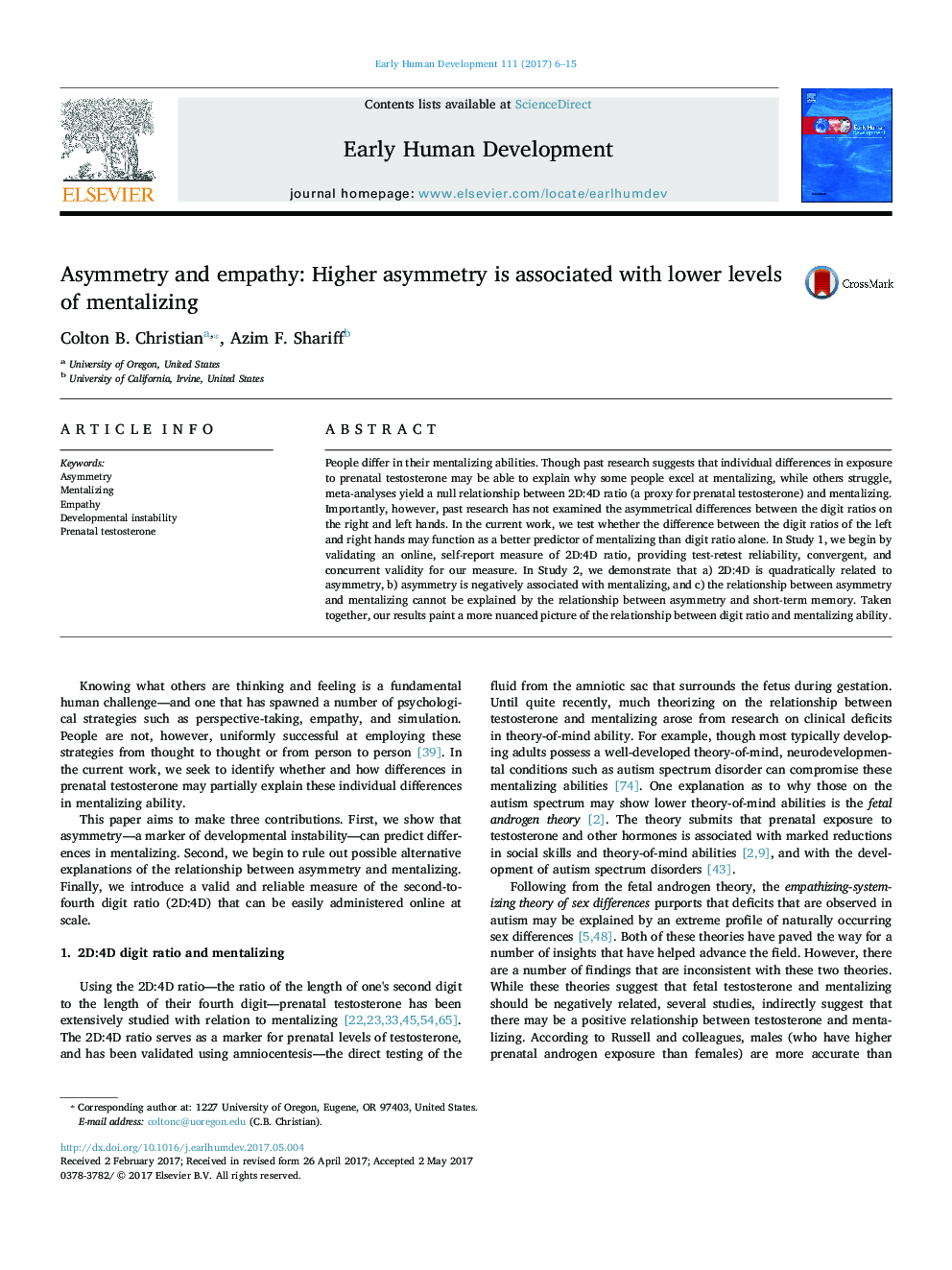| Article ID | Journal | Published Year | Pages | File Type |
|---|---|---|---|---|
| 5694124 | Early Human Development | 2017 | 10 Pages |
Abstract
People differ in their mentalizing abilities. Though past research suggests that individual differences in exposure to prenatal testosterone may be able to explain why some people excel at mentalizing, while others struggle, meta-analyses yield a null relationship between 2D:4D ratio (a proxy for prenatal testosterone) and mentalizing. Importantly, however, past research has not examined the asymmetrical differences between the digit ratios on the right and left hands. In the current work, we test whether the difference between the digit ratios of the left and right hands may function as a better predictor of mentalizing than digit ratio alone. In Study 1, we begin by validating an online, self-report measure of 2D:4D ratio, providing test-retest reliability, convergent, and concurrent validity for our measure. In Study 2, we demonstrate that a) 2D:4D is quadratically related to asymmetry, b) asymmetry is negatively associated with mentalizing, and c) the relationship between asymmetry and mentalizing cannot be explained by the relationship between asymmetry and short-term memory. Taken together, our results paint a more nuanced picture of the relationship between digit ratio and mentalizing ability.
Related Topics
Health Sciences
Medicine and Dentistry
Obstetrics, Gynecology and Women's Health
Authors
Colton B. Christian, Azim F. Shariff,
